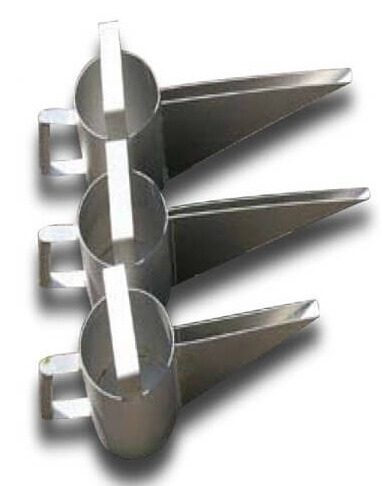What is the purpose of SAMPLING? Where do you need to collect samples in a plant for good operation and correct metallurgical accounting? Samples give the operating staff and crew all of the information that is necessary to operate the concentrator plant. Samples may show when equipment is almost worn out, when circuit performance is down and also indicate future operating conditions.
Within the plant there are standard samples that are required. Some are taken for the immediate knowledge that is needed to control the operation.
These are things like checking pH LEVELS, DENSITIES, TITRATION, and taking GRAB SAMPLES of the separation process. A grab sample is a sample that is grabbed out of the pulp flow and indicates only what happening-at was that moment. It is used to check the status of the circuit either verifying an operational change or simply to reassure the operator that the circuit is still OK.
Then there are SHIFT SAMPLES. These samples are taken at regular intervals to check and record the performance of each individual circuit or area that was operated during a given time period.
Another time period for sampling is a TWENTY FOUR HOUR sample. This is a sample that is comprised of the results of a circuit over a full day. Again it is to gather data to assist in evaluation of circuit operations.
 Too many samples are taken with a very much compromised quality. A good sample starts with a good sample cutter. Do not even sample is your sample cutter is faulty.
Too many samples are taken with a very much compromised quality. A good sample starts with a good sample cutter. Do not even sample is your sample cutter is faulty.
Most of these samples, that are taken to represent a period of time, will he what is termed a COMPOSITE SAMPLE. A composite sample is a number of small samples that ‘are taken and mixed together to form one large sample. Sampling shipments of final concentrate is an example of when this type of sampling technique is used. If the value of the shipment is to be determined, a series of small samples will be taken from different spots within the shipment. They will then be mixed together and assayed. The content of the concentrate may change from spot to spot. By sampling the entire shipment and mixing the samples together, a sample that represents the actual content of the entire shipment is obtained.
What types of samples would be taken from a circuit operation?
The FEED SAMPLES to the primary grinding circuit is to check size of the incoming feed and the moisture content. The moisture that is on the surface of the rock must be taken into account when accounting for the monthly tonnages.
Another sample that has to be taken is the CLASSIFIER OVERFLOW sample. This sample will indicate the mineral content of the feed to the grinding circuit and the effectiveness of the grind. If the work performance of an individual mill is going to be checked, two samples will be taken, the FEED and the DISCHARGE. By running a screen analysis on each and comparing the two, the performance may be measured.
After the classifier overflow the next sample would be the HEAD sample of the separation process. The feed to any circuit, including grinding, is called the heads of that circuit. Even if the classifier overflow directly feeds the next circuit, it may not be the HEAD of that circuit. The head sample of a circuit must contain everything that is being fed into the circuit. This would include any feed that is being returned to that circuit for further processing.
The next sample is the TAIL sample. This sample is what is left over after the process has extracted all of the mineral that it was able to from the circuit feed. The Tailings of one circuit may become part of the heads of another circuit for further processing or it may become FINAL TAILS. Material that has had as much mineral as possible taken from it.
The mineral that has been extracted from the ore is called the CONCENTRATE sample.
To understand what the circuit is doing, the relationship between all three samples the HEAD, TAIL and CONC sample have to be looked at. By assaying the head and the tail sample to discover what the mineral content of each is. Then by comparing the two the operator will know exactly how much of the mineral was recovered. The concentrate sample will indicate how much unwanted material was collected with the valuable mineral.
